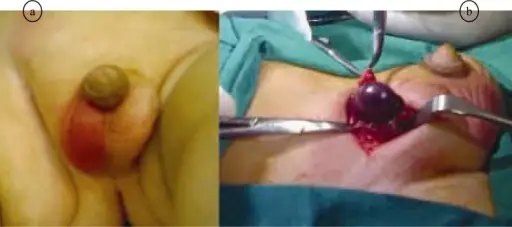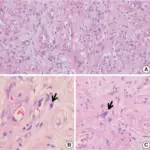Neonatal testicular torsion is an acute vascular occasion where the spermatic cord is twisted on its axis with substantial tenderness and swelling of an earlier normal testicle either in utero or shortly after birth.
What is the Pathology of Neonatal Testicular Torsion?
The pathology of neonatal testicular torsion is:
-Etiology: The cause of neonatal testicular torsion is not reliably identified. Factors associated with neonatal testicular torsion include anatomic abnormalities and adhesions.
-Genes involved: NA
-Pathogenesis: The sequence of events that lead to neonatal testicular torsion, tunica vaginalis, and epididymis twist on the spermatic cord, ischemic fluctuations swelling, infarction, and necrosis may occur. This may progress to gangrene to the testis.
-Morphology: The morphology associated with neonatal testicular torsion shows ranges from strong congestion to extensive eructation of blood into the interstitial tissue of the epididymis and testis in general and hemorrhagic infarction.
-Histology: The histology associated with neonatal testicular torsion show necrotic or ischemic tissue.
How does Neonatal Testicular Torsion Present?
Patients with neonatal testicular torsion are typically male neonates. The symptoms, features, and clinical findings associated with neonatal testicular torsion include neonate irritability, firm, non-tender testis, scrotal edema, and swelling.
How is Neonatal Testicular Torsion Diagnosed?
Neonatal testicular torsion is diagnosed through examination, and doppler ultrasonography.
How is Neonatal Testicular Torsion Treated?
Neonatal testicular torsion is treated through manual detorsion, or emergency surgical intervention if need be.
What is the Prognosis of Neonatal Testicular Torsion?
The prognosis of neonatal testicular torsion is fair depending on the age and time-lapsed.



